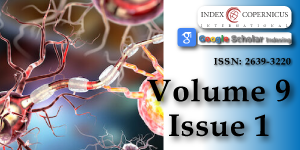Bidirectional Aspects of Well-being of Patients and Main Caregivers after Neurosurgery
Main Article Content
Abstract
Objectives: Hospitalization following a head injury is associated with high rates of disability that have a strong correlation with depression, anxiety, and low self-esteem. Well-being is related to life satisfaction, quality of life, happiness, personal growth and flourishing, competence, self-acceptance, positive relationships, and autonomy. The well-being of patients and their primary caregivers is important when a patient is left with impaired mobility after neurosurgery. The aim of this study is to examine whether the well-being of patients and their primary caregivers will differ before and after neurosurgery, and whether well-being differs between patients with motor disability (WMD group) and those without, compared to those who are not - NMD group (non-motor disability).
Methodology: 123 patients and their main caregivers were recruited. Of these, 62 were in the before neurosurgical group, 31 Patients and 31 caregivers. 61 in the after neurosurgical group, 30 Patients and 31 caregivers, of which there are 16 from WMD group and 15 from NMD.
Main outcome measures: Two analyses of Variance (ANOVA) were conducted: for WMD and NMD separately. The results reveal a significant decrease in wellbeing for both, patient and main caregivers, but a stronger decline in well-being was observed among WMD, as indicated by a larger effect size (η² = 0.74) compared to the NMD (η² = 0.38). In addition, no significant effect between group and time of measurement was found, indicating that the decrease in wellbeing was not different among patients compared to their main caregivers.
Conclusion: The findings highlight the multifaceted impact of neurosurgery on well-being, particularly for patients who remain with motor disabilities and their primary caregivers.
The decline in well-being after neurosurgery highlights the need for improved social support and the importance of developing treatment programs that can help ease the process of coping with these phenomena and provide appropriate support for both patients and their primary caregivers.
Article Details
Copyright (c) 2025 Levi RM, et al.

This work is licensed under a Creative Commons Attribution 4.0 International License.
Barrow DL, Bendok BR. Introduction: What is Neurosurgery? Oper Neurosurg (Hagerstown). 2019;17(Suppl 1):S1-S2. Available from: https://doi.org/10.1093/ons/opz071
Whitnall L, McMillan TM, Murray GD, Teasdale GM. Disability in young people and adults after head injury: 5–7 years follow up of a prospective cohort study. J Neurol Neurosurg Psychiatry. 2006;77(5):640-5. Available from: https://doi.org/10.1136/jnnp.2005.078246
Andelic N, Sigurdardottir S, Schanke AK, Sandvik L, Sveen U, Roe C. Disability, physical health and mental health 1 year after traumatic brain injury. Disabil Rehabil. 2010;32(13):1122-31. Available from: https://doi.org/10.3109/09638280903410722
Duan-Porter W, Vo TN, Ullman K, Langsetmo L, Strotmeyer ES, Taylor BC, et al. Hospitalization-associated change in gait speed and risk of functional limitations for older adults. J Gerontol A Biol Sci Med Sci. 2019;74(10):1657-63. Available from: https://doi.org/10.1093/gerona/glz027
Elser H, Gottesman RF, Walter AE, Coresh J, Diaz-Arrastia R, Mosley TH, et al. Head injury and long-term mortality risk in community-dwelling adults. JAMA Neurol. 2023;80(3):260-9. Available from: https://doi.org/10.1001/jamaneurol.2022.5024
Raj R, Kaprio J, Pekka J, Korja M, Siironen J. Risk of dementia after hospitalization due to traumatic brain injury. Neurology. 2022;98(23):e2377-86. Available from: https://doi.org/10.1212/wnl.0000000000200290
Ponsford J, Trevena-Peters J, Janzen S, Harnett A, Marshall S, Patsakos E, et al. INCOG 2.0 guidelines for cognitive rehabilitation following traumatic brain injury, Part I: Posttraumatic amnesia. J Head Trauma Rehabil. 2023;38(1):24-37. Available from: https://doi.org/10.1097/htr.0000000000000840
Leong KW, Li L, Moga R, Bernstein M, Venkatraghavan L. Assessment of caregiver burden in patients undergoing in- and out-patient neurosurgery. J Clin Neurosci. 2021;88:83-7. Available from: https://doi.org/10.1016/j.jocn.2021.03.035
Malki ST, Johansson P, Andersson G, Andréasson F, Mourad G. Caregiver burden, psychological well-being, and support needs among Swedish informal caregivers. BMC Public Health. 2025;25:867. Available from: https://doi.org/10.1186/s12889-025-22074-y
Maccagnan A, Wren-Lewis S, Brown H, Taylor T. Wellbeing and society: towards quantification of the co-benefits of wellbeing. Soc Indic Res. 2019;141(1):217-43. Available from: https://doi.org/10.1007/s11205-017-1826-7
Comfort LD, Neidert MC, Bozinov O, Regli L, Stienen MN. Determining the impact of postoperative complications in neurosurgery based on simulated longitudinal smartphone app-based assessment. Acta Neurochir (Wien). 2022;164(1):207-17. Available from: https://doi.org/10.1007/s00701-021-04967-0
Winther Topp C, Ostergaard SD, Søndergaard S, Bech P. The WHO-5 Well-Being Index: A systematic review of the literature. Psychother Psychosom. 2015;84(3):167-76. Available from: https://doi.org/10.1159/000376585
Krahn GL, Klein Walker D, Correa-De-Araujo R. Persons with disabilities as an unrecognized health disparity population. Am J Public Health. 2015;105(Suppl 2):S198-206. Available from: https://doi.org/10.2105/AJPH.2014.302182
Pinquart M, Sörensen S. Correlates of physical health of informal caregivers: A meta-analysis. J Gerontol B Psychol Sci Soc Sci. 2007;62(2):P126-37. Available from: https://doi.org/10.1093/geronb/62.2.P126
Adelman RD, Tmanova LL, Delgado D, Dion S, Lachs MS. Caregiver burden: A clinical review. JAMA. 2014;311(10):1052-60. Available from: https://doi.org/10.1001/jama.2014.304
Schulz R, Sherwood PR. Physical and mental health effects of family caregiving. Am J Nurs. 2008;108(9 Suppl):23-7; quiz 27. Available from: https://doi.org/10.1097/01.naj.0000336406.45248.4c





